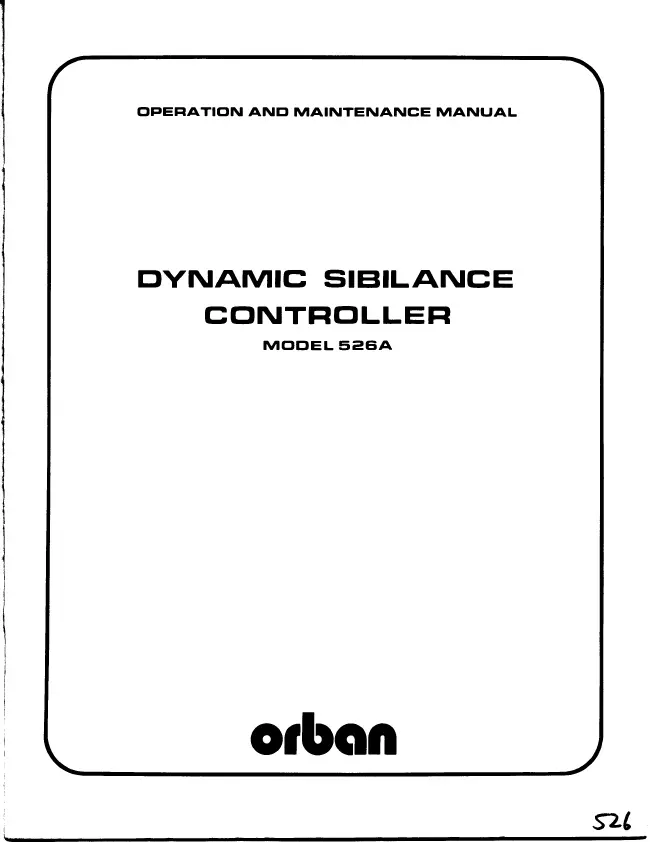Orban - 526A - Effect Processor
Manufacturer:
Equipment:
526A
Date:
1979
Category:
Group:
Sub Group:
Information
The
Orban 526A Dynamic Sibilance
Controller has been
designed as a universal de-esser for the recording,
broadcast, and motion picture industries. It offers
electrical specifications consistent with other
state-of-the-art audio signal processing equipment,
extremely simple setup and operation, and dynamic
characteristics which have teen optimized for sibilance
control. The
526A incorporates a circuit which forces the
threshold of de-essing to track the average input level,
permitting constant amounts of de-essing and audibly
consistent results over an input level range of
approximately 15dB.
Compared to its widely accepted predecessor, the
three-channel 516EC, the
526A offers the following improved
features:
1) transformer-coupled, balanced inputs and outputs;
2) mic and line-level inputs;
3) five-segment peak-reading output level indicator;
4) gain control;
5) two segment (normal and heavy) gain reduction
indicator;
6) full RFI suppression;
7) improved circuit stability;
8) improved control-loop dynamics;
9]higher slewrate and lower high-frequency distortion.
De-essers have existed for years, usually as
frequency-dependent sidechains in limiters or compressors.
However, a compressor used as a de-esser cannot function
optimally if one attempts to compress and de-ess with the
same device, since optimum compression ratios, attack times,
and release times are quite different for the tv modes of
operation. In addition, such devices are often
insufficiently adjustable, and often contain simple filters
whose selectivity is inadequate to provide sufficient
differentiation between sibilance frequencies and the lower
frequencies where most of the voice energy is concentrated.
Further, these devices cannot simultaneously de-ess voice
and maintain natural dynamic range because their thresholds
are fixed.
It is clear that a specialized de-esser is therefore
necessary to perform the sibilance control only. It is
ordinarily the last piece of processing hardware in a chain
which may include both an equalizer and a compressor or
limiter. Both devices will tend to increase sibilance with
reference to the energy of the lower-frequency vocal
components; the de-esser then knocks down sibilance levels
until they are once again natural-sounding and do not cause
overload in recording media employing high frequency
preemphasis.
It is this function which the
526A serves. When not
de-essing, it acts as a high-quality amplifier. When the
level in the sibilance band attempts to exceed a certain
fraction of the peak input level (said fraction being
adjusted by the operator with the threshold control) , then
the gain is automatically reduced to hold the output at this
threshold level.
Hie
526A attacks in approximately 1mS and recovers in
approximately 1OmS. It can thus act on sibilance without
affecting surrounding vocal sounds. Because the entire
channel gain is reduced (as opposed to de-essers which
operate as program-controlled filters) , any residual IM
distortion which accompanies the original sibilance is
reduced along with the sibilance itself.
Service and user manual
Manual type:
Service and user manual
Pages:
13
Size:
1.5 MB
Language:
english
Revision:
Manual-ID:
Date:
January 1979
Quality:
Scanned document, reading partly badly, partly not readable.
Upload date:
Oct. 25, 2017
MD5:
ef6cd6cb-ffb6-b991-ce57-2df89d726b23
Downloads:
346
